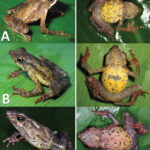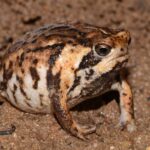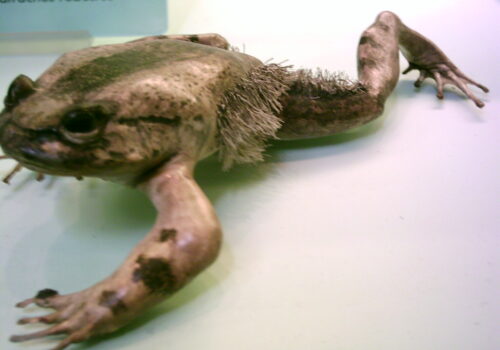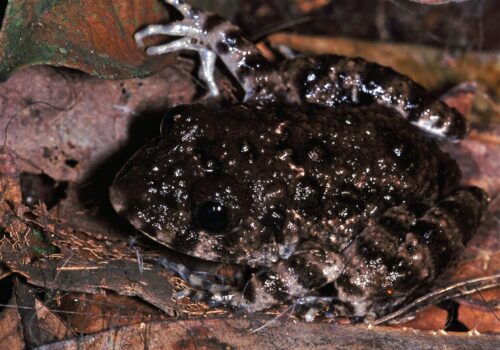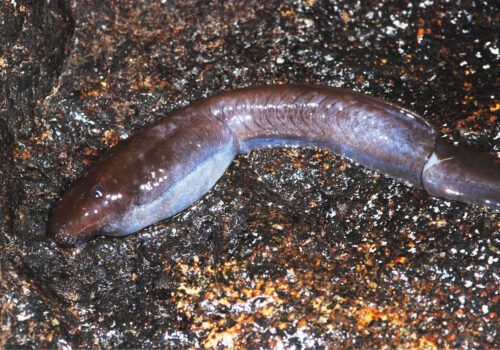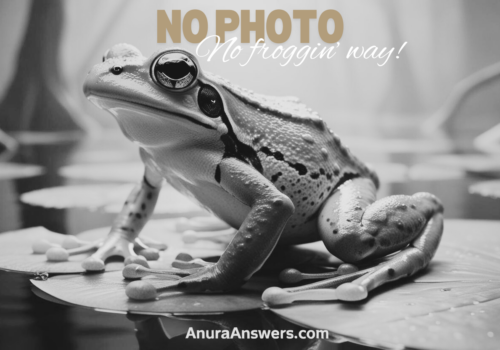The Enigmatic Savannah Tree Frog: Exploring Leptopelis bufonides#
Introduction#
Amid the grassy savannas and sparse woodlands of sub-Saharan Africa, the twilight air vibrates gently with rhythmic calls—a symphony orchestrated by creatures often unseen but profoundly essential. One such nocturnal maestro is the captivating savannah tree frog, scientifically known as Leptopelis bufonides. A member of the Arthroleptidae family, this species intrigues naturalists and herpetologists alike due to its curious behaviors, adaptability, and the subtle mosaic of colors adorning its tiny frame.
Unlike many amphibians confined strictly to dense rainforests or lush wetlands, Leptopelis bufonides gracefully navigates life across semi-arid regions. Their ability to thrive under relatively harsh conditions makes them a particularly fascinating subject of study, shining a spotlight on nature’s tenacity. But perhaps most astonishing is their unique “laughing” call, a peculiar vocalization that permeates the savannah nights, weaving itself effortlessly into the tapestry of these ecosystems.
Taxonomy and Classification#
Leptopelis bufonides belongs to the Arthroleptidae family, within the rich and diverse class Amphibia. Occupying the order Anura, commonly known as frogs and toads, the genus Leptopelis comprises numerous species scattered primarily across sub-Saharan Africa. This grouping is collectively referred to as “tree frogs,” though habitat preferences among species can vary considerably.
Discovered and formally described in the early 20th century, this species was initially recognized as distinctive due to its petite stature, unique coloration patterns, and notably characteristic calls. Among its closest relatives stand other Leptopelis species such as Leptopelis viridis and Leptopelis flavomaculatus, each exhibiting vibrant coloration, arboreal adaptations, and intriguing behavioral traits.
Natural Habitat#
Geographic Range and Distribution#
The range of Leptopelis bufonides spans across sub-Saharan West Africa, including nations such as Nigeria, Burkina Faso, Senegal, Mali, Niger, Cameroon, and Chad. Predominantly found in environments classified as Sudanian or Sahelian savannas, these frogs comfortably occupy semi-arid grasslands interspersed with sparse woodlands, scrublands, temporary ponds, and seasonal wetlands. Their presence in these diverse yet challenging habitats underscores their remarkable versatility.
Habitat Preferences and Adaptations#
Unlike their tropical counterparts confined to rainforest canopies, these hardy amphibians prefer habitats where dry seasons are pronounced and conditions rather harsh. To cope with this, Leptopelis bufonides often selects micro-habitats rich in moisture retention capabilities. Sparse shrubs, acacia trees, rock crevices, and burrows offer refuge during scorching daylight hours. At night, they emerge to forage near ephemeral pools or moisture-rich depressions, capitalizing on nocturnal humidity spikes.
Seasonal rains awaken dormant landscapes, filling ephemeral pools vital for this species’ reproductive cycles. Adaptations such as rapid breeding and quick tadpole metamorphosis enable offspring to mature swiftly, ensuring survival before temporary water sources evaporate.
Physical Characteristics#
Casual observers might easily overlook the demure but delightful beauty inherent in Leptopelis bufonides‘ modest appearance. Reaching lengths typically between 35 to 45 millimeters, these tree frogs boast rounded bodies, slender yet muscular limbs, and adhesive toe pads tailored to arboreal life. These toe pads, immaculately designed through evolutionary finesse, grant them unparalleled dexterity while navigating sparse foliage or rocks.
Coloration within the species exhibits significant variability—a necessary adaptation for camouflage against stark savannah backgrounds. Dominant shades range from muted sandy beige and pale yellows to dusky olive-green hues. Often, darker mottling or irregular blotches mark their dorsal regions, aiding concealment from avian and terrestrial predators alike. The belly displays a softer tone, often creamy or pale yellow, providing additional camouflage benefits.
Behavior and Life Cycle#
Nocturnal Foraging and Diet#
Averse to scorching daylight heat, Leptopelis bufonides transforms after sunset into an active and adept nocturnal predator. Their diet predominantly consists of invertebrates—spiders, moths, beetles, ants, and various flying insects challenging enough prey even for larger amphibians. Employing exceptional camouflage, heightened senses, and remarkable agility, these frogs ambush prey in quick, decisive movements, their jaws snapping shut with remarkable precision.
Mating Calls and Reproductive Behaviors#
The species’ breeding season correlates closely with seasonal rains, typically occurring between June and September. Males herald the arrival of mating season with their iconic call, reminiscent of soft laughter echoing gently across the savannah. This unique vocalization sets the stage for elaborate courtship displays. Females, meticulously cautious in mate selection, evaluate potential companions by assessing call depth, frequency, and stamina—a remarkable natural spectacle of selecting optimal genetic traits.
Once mating occurs, females deposit eggs in clusters at the edges of temporary water bodies. These eggs metamorphose swiftly into tadpoles, ensuring their transformation into fully terrestrial froglets occurs before drying ponds strand them helplessly. The entire transition—from tiny eggs to air-breathing juveniles—happens within weeks, a strategic adaptation perfectly attuned to ephemeral savannah water cycles.
Ecological Role#
Within its savannah habitat, Leptopelis bufonides performs an invaluable ecological service. As both predators and prey, they serve as significant bioindicators—species whose abundance, behavior, and health reflect broader ecosystem conditions. Amphibians universally demonstrate sensitivity to environmental pollutants, climate fluctuations, and habitat degradation, making their presence (or absence) crucial in signaling ecological integrity or distress.
Predation on insects, particularly mosquitoes and agricultural pests, significantly controls pest numbers, benefiting surrounding wildlife and even human communities. Conversely, these diminutive frogs provide essential sustenance for diverse predators—reptiles, birds of prey, snakes, and mammals—cementing their critical place within the ecological food web.
Threats and Conservation Status#
The International Union for Conservation of Nature (IUCN) currently categorizes Leptopelis bufonides as “Least Concern.” While this assessment suggests relative stability in current populations, ongoing habitat changes pose undeniable risks. Key threats include agricultural expansion, overgrazing, climate change, and habitat fragmentation due to infrastructure projects. Additionally, pesticide usage in agriculture severely impacts amphibian populations due to their thin, sensitive skin and susceptibility to chemical poisoning.
Proactive conservation measures aim to monitor populations, preserve essential ephemeral wetlands, and foster community awareness campaigns, highlighting amphibians’ importance in ecosystem balance. Engaging local communities—the frontline defenders of biodiversity—is essential. Educating farmers on ecological pest control alternatives and championing sustainable agricultural practices could prove instrumental in safeguarding Leptopelis bufonides and other savannah species.
Cultural and Scientific Significance#
While widespread local folklore seldom spotlights Leptopelis bufonides specifically, amphibians broadly maintain symbolic status across African cultures, representing fertility, renewal, and life cycles through seasonal arrival coinciding with rains and crop production. Scientifically, the species offers researchers valuable insights into amphibian physiology, adaptation strategies, climate change resilience, and ecosystem health indicators—an arsenal of knowledge driving future conservation and environmental policies.
Conclusion#
Leptopelis bufonides, a remarkable frog thriving in the challenging, ever-changing African savannah, exemplifies resilience, adaptability, and ecological significance. From its delicate nocturnal calls to its swift lifecycle strategically attuned to seasonality, it embodies the brilliance and fragility of nature. As custodians of our shared planet, we hold power and responsibility to safeguard these vibrant ambassadors of biodiversity. Engaging in conservation efforts, fostering local stewardship, and furthering awareness will ensure that the cheerful calls of the savannah tree frogs continue echoing across Africa’s iconic landscapes for generations to come.




